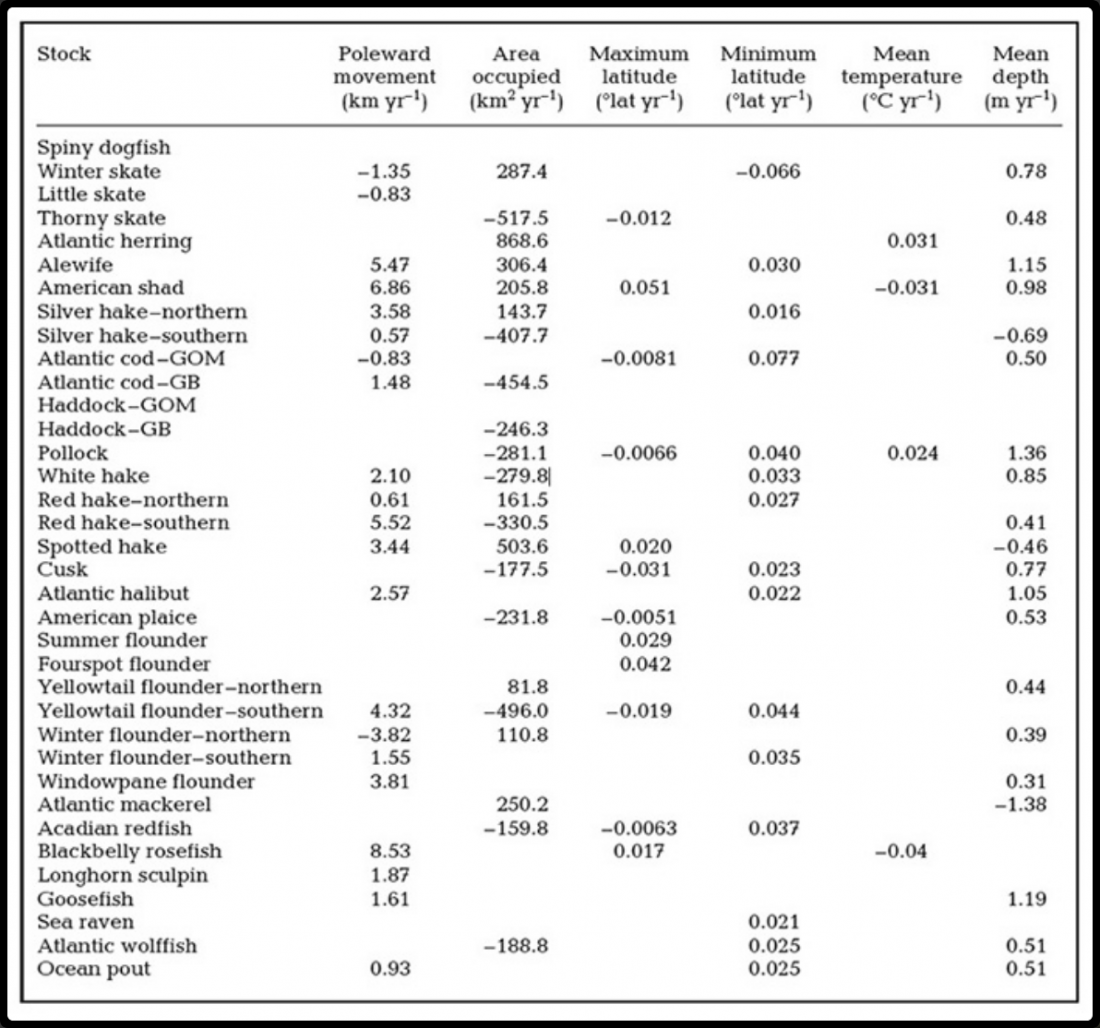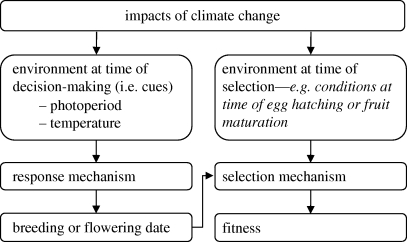My last blog ended with a promise that I would look into location sensitivity of other foods and drinks – after all, humans can’t survive on wine alone.
When I Googled “climate change impact,” these were my top results:
- Marine Ecosystem
- Real Estate
- Global Food Security
- Biodiversity
- Ecosystem
With the exception of real estate, all of these directly relate to living systems. I have covered the impacts on the flora and fauna of a few habitats in previous blogs, including the repercussions on fisheries. In that blog I emphasized the conflict between fishermen and regulators in Maine regarding how best to address the crisis of fishing in the state. Populations of fish in specific places are thinning out, many migrating to better places – e.g. north to cooler water (January 20 and 27, 2015). Fishermen all over the world use a localized concept similar to the French terroir system I explained last week. In years past, the fishermen of Maine found plenty of fish in their coastal waters and assumed that this would stay true in the future. That is no longer the case.
Nor is the issue specific to Maine. Figure 1 gives a quantitative assessment of the movement of individual fish species in the US, as compiled by NOAA:

Figure 1 – NOAA estimates of movement of individual fish species in the US coastal zones per year
Fish can move quickly so the changes are relatively fast. The population of blackbelly rosefish shifted ~8.53km (more than 5 miles) in one year, which is a significant change. But the migration to cooler water is obviously not a guaranty for successful adaptation. The fish then have to find edible food in their new location or adapt to consume different food. Such adaptation usually takes time and works along the Darwinian principle, i.e. self-selection for species that can best survive the conditions.
Crops (including the vines that produce the right grapes for good wine production) don’t pick up and move but plants have other mechanisms for spreading to new locations – namely, pollinators. The Guardian published an op-ed about the impact of climate change on various garden plants:
From my perspective as caretaker of this little plant community, the problem is also that many of the seasonal understandings that have been basic to gardening in Toronto can no longer be assumed. Lavender might not survive the winter without wrapping. Tomatoes might need to be shaded in order to survive what is forecast to be an especially hot summer. Plants that require specialist pollinators may find their calls unanswered because the short-lived insects on which they rely may now have lives out of sync with the blooms.
Obviously the same issues hold true for growing all the agricultural products (indirectly including the meat that we consume) that make up our sources of food, a process that also constitutes most of the employment in developing countries. The impacts on these vital crops aren’t limited to temperature changes; the main concern is how the changing temperature affects a farm area’s water cycle.
For those of us that sometimes forget, we are all part of the biota. We are feeling the impacts not only via our food and drink supply but also through our ability to survive the changing climate. Since the impacts are even worse within poor nations, many of people are using the same method of adaptation as the fish – trying to migrate to better places. Just type, “environmental refugee” into the search box to find out how often I address this issue.
In an earlier blog I discussed claims that we are in the middle of the Sixth Mass Extinction, according to the quantified decline in population of many species (September 19, 2017). The measurement of declining species is also territorial. We measure where we think that these species are (or have been) most abundant – migration in most cases is difficult to follow.
When I started writing about the impact of climate change on wine I ran across a relevant article in The New York Times:
5 Plants and Animals Utterly Confused by Climate Change: Global warming is causing spring to arrive early and autumn to come late in many places, and not all species are adapting at the same rate.
By Livia Albeck-Ripka and Brad Plumer
The article references a scientific paper from 2010.
Scientists who study the changes in plants and animals triggered by seasons have a term for this: phenological mismatch. And they’re still trying to understand exactly how such mismatches — like the blooming of a flower before its pollinator emerges — might affect ecosystems.
I was unfamiliar with the term, “phenological mismatch,” so I referred to the original paper. Here is the abstract, along with a key figure that explains the impact of climate change on reproduction:
Philos Trans R Soc Lond B Biol Sci. 2010 Oct 12; 365(1555): 3177–3186.
The effects of phenological mismatches on demography
Abraham J. Miller-Rushing,1,2,* Toke Thomas Høye,3 David W. Inouye,4,5 and Eric Post6
Abstract
Climate change is altering the phenology of species across the world, but what are the consequences of these phenological changes for the demography and population dynamics of species? Time-sensitive relationships, such as migration, breeding and predation, may be disrupted or altered, which may in turn alter the rates of reproduction and survival, leading some populations to decline and others to increase in abundance. However, finding evidence for disrupted relationships, or lack thereof, and their demographic effects, is difficult because the necessary detailed observational data are rare. Moreover, we do not know how sensitive species will generally be to phenological mismatches when they occur. Existing long-term studies provide preliminary data for analysing the phenology and demography of species in several locations. In many instances, though, observational protocols may need to be optimized to characterize timing-based multi-trophic interactions. As a basis for future research, we outline some of the key questions and approaches to improving our understanding of the relationships among phenology, demography and climate in a multi-trophic context. There are many challenges associated with this line of research, not the least of which is the need for detailed, long-term data on many organisms in a single system. However, we identify key questions that can be addressed with data that already exist and propose approaches that could guide future research.

A schematic outline of how climate change may affect reproduction. Changes in the environment at the time of decision-making may affect the timing of reproduction via the response mechanism. For example, changes in temperature might affect the timing of breeding or flowering. However, changes in the environment at the time of selection (e.g. egg hatching or fruit maturation) will affect the fitness consequences of breeding at a particular date. Conditions at the time of decision-making may have historically provided reliable cues of conditions at the time of selection. Changes in climate may change the historical relationship and lead to maladaptive decisions. Adapted from Visser et al. (2004).
Figure 2
Given that the paper itself didn’t give much of a description of “phenology” either, here is Wikipedia’s definition of the term:
Phenology is the study of periodic plant and animal life cycle events and how these are influenced by seasonal and inter-annual variations in climate, as well as habitat factors (such as elevation)
In other words, a phenological mismatch is when related parts of an ecosystem are no longer in sync. We still don’t know the scope or scale of this climate change-based phenomenon but we’d better get familiar with the terminology and its significance to humans.

It sad to see how many animals have to suffer at the greed of humans, especially since they don’t do anything to harm our environment and many of these organisms helps improve the environment we have too. We have so many resources and useful strategies to improve our environment , I hope that we can start caring and nurturing our environment as we should have from the beginning before many more organism die off.
The interruption of the climate due to human intervention has had horrible effects on all sorts of organisms across the globe. These organisms have adapted to rely on a steady change of the climate throughout the year and that shift in climate has caused mass die offs for those organisms unlucky and unable to look for a new suitable habitat. Everything from the temperature to food sources get altered in their habitats leading to dire consequences.
It’s disheartening to think about the effects climate change has on animals, who had no contribution to it. These ecosystems were functioning well before human intervention, with animals relying on things such as their environment and changes in weather to remain constant. When human intervention leads to warmer climates or irregular weather patterns, these animals are at risk. The consequences of climate change on animals can have disastrous effects on entire ecosystems, and it’s important that we work on reversing the damages.
It is is unfortunate that Ecosystems where operation extremely well until humans came along and abused what was given to them, thinking that were will not be price to pay. Clearly it is not the case, but at least humans did that to themselves, however animals had nothing to do with it. Humans usually in found of animals (either as a beings or in their bellies) however they have not given them a second though when invading their territories!
Humans have technologies, money, and most importantly, other humans to help adapt. Without considering the disastrous effects of migration would have on the species’ native ecosystem, studying how animals migrate and adapt can maybe solve humanity’s issues with migration and adaptation.
Thanks for the follow-up.
Great post! Given that the original paper was published in 2010, I checked up on some of the scientists who wrote it to see what they’ve been up to more recently. One of them co-authored a piece called, “Internet Blogs, Polar Bears, and Climate-Change Denial
by Proxy” earlier this year (https://www.ncbi.nlm.nih.gov/pubmed/29662248). It shows that “blogs that deny or downplay AGW disregard the overwhelming scientific evidence of Arctic sea-ice loss and polar bear vulnerability. By denying the impacts of AGW on polar bears, bloggers aim to cast doubt on other established ecological consequences of AGW, aggravating the consensus gap.”